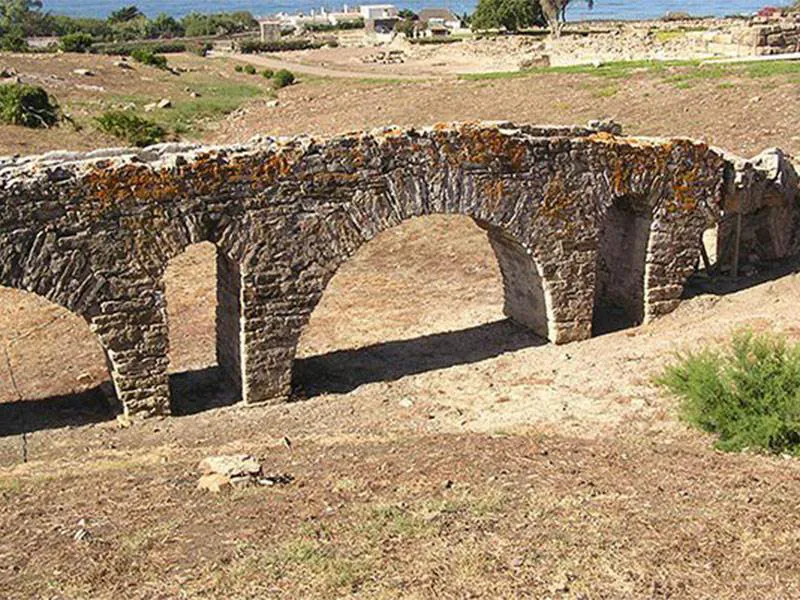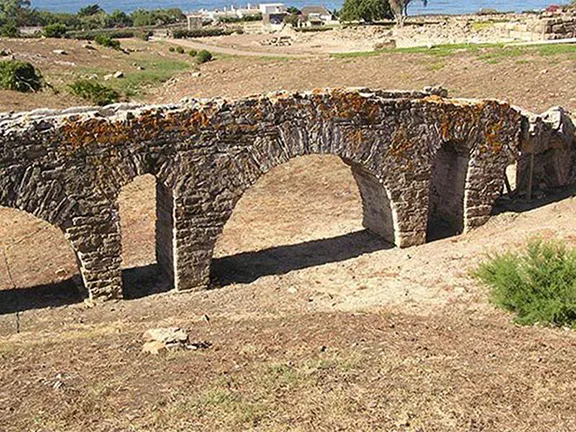Baelo Claudia is a Roman town on the Atlantic coast near Bolonia, Cadiz province. Founded during the 1st century BC it was built to conform to the 'perfect' Roman town.
By Nick Nutter | Updated 14 Sep 2022 | Cádiz | Places To Go |
Login to add to YOUR Favourites or Read Later


The Romans at Baelo Claudia
By 100 BC the fledgeling Roman Empire extended from Turkey in the east, along the northern shores of the Mediterranean, Greece, Italy, southern France, Sardinia, Corsica, Spain and small territories established in North Africa. Already the empire was struggling to feed not only its resident population but the hundreds of thousands of migrant workers and slaves from surrounding territories.


The Romans at Baelo Claudia
Baelo Claudia was founded about this time for two reasons. First it was an ideal place from which to trade with Tangiers, Tingis to the Romans, and link that part of the Empire to mainland Europe, and secondly its location, on the Gibraltar Strait, facing the Atlantic, made it a good place to establish a fish-salting factory to take advantage of the annual migration of tuna through the Strait. In his ‘Geografia’ in 14 AD, Strabo describes Baelo Claudia (then called simply Belon) as an Emporium, a market or place of commerce, on a par with the other named emporiums, Cádiz, Seville, Málaga, Córdoba, Cartagena and Ampurias.


The Romans at Baelo Claudia
Unusually for a Roman town there is no evidence of any previous occupation of the site. The pre-Roman native residents lived at the Silla del Papa site in the nearby Sierra Plata and the open aspect of the beach would not have suited previous civilizations that had passed this way. The Phoenicians established their settlement on the Punta Camarinal, a rocky promontory alongside a good stream one kilometre south-west of Baelo Claudia. The promontory is easily visible from the Roman town.


The Romans at Baelo Claudia
Fish salting was not a new technology, it was already an established process during Phoenician times seven hundred years earlier, in fact the Romans, innovative though they were, never shied from copying technology if it suited them. This is one of the reasons Baelo Claudia is so fascinating. It is not the largest Roman site, it is not the most monumental, nor did it economically or politically ever compete with sites such as Corduba or Italica but, when it was built, it was to a genuine Roman town plan that incorporated the latest and borrowed developments, not just in fish processing but street planning, water supply and building. It was also built to provide the needs of a resident population and a migrant worker population that were brought in during the fish harvest. The theatre for instance is far larger than that required by the permanent residents. It is clear that migrant workers were respected and catered for.


The Romans at Baelo Claudia
Access to the site is now through a modern looking museum that does not blend in with its surroundings at all. Despite the forbidding exterior the information within is very good. A reconstruction of the city from excavations and geophysical surveys demonstrates the forethought that went into a Roman town whilst exhibits show all aspects of a citizens life. Interactive and static displays and clever use of computer enhanced video bring the Roman town to life, a technology the Romans would undoubtedly have embraced with enthusiasm.


The Romans at Baelo Claudia
For a Roman a town was far more than just a place to live. The concept they had then is difficult to grasp now because they had different ideas but I will try. The space enclosed by the surrounding walls was considered protected by the gods. The Roman citizen expected there to be a number of public meeting places such as a forum and market. There had to be places of entertainment and worship as well as housing. The Roman citizen expected a number of free public functions. Also expected were rules of behaviour and rules governing the running of the town and people to enforce those rules. A citizens place in society depended not just on his social standing but also on the status of the town in which he lived. The Roman citizen carried in his head, whether he had been there or not, a mental image of Rome and that is what he expected.
The lay out of the town is a grid with two main roads, the decumanus maximus that runs east to west and the cardo maximus that runs from north to south. The whole site, 13 hectares, is surrounded by a wall with gates where the roads entered the town. The east gate is called the Carteia gate, the road led to Carteia which is near San Roque and the western gate is called Gades Gate, the road taking you to Gades or Cádiz. At the crossroads of the two main roads is the Forum, the centre of political, administrative and religious life. To the north of the Forum is the Temple of Isis and to the west the market area. South of the forum is the Basilica. On the southern side of the decumanus maximus, just behind the beach, is the salting factory. If you walk up the cardo maximus beyond the Temple of Isis you will be climbing the hill into the residential area of town, an area largely un-excavated as yet but it is worth the effort because you will come across an aqueduct, one of two that carried water from the hills into the town. The second aqueduct, on the western side fed the thermal baths.
Baelo Claudia, as with most towns, developed over a period of time. Archaeologists have determined that the first buildings were those used for fish salting just behind the beach. They were built between 100 BC and 50 – 30 BC. The workforce probably lived at Silla del Papa. The salting bays were demolished around 30 BC and larger bays were built in their place. At the same time a few houses were built in the vicinity of the factory, spreading back towards the hills. This phase lasted until the start of the reign of Claudius in 41 AD. The town then grew rapidly and between 41 AD and the middle of the 2nd Century the main public buildings were built. The forum, market, shops, basilica and the temple were constructed during the Flavian dynasty, between 69 and 96 AD. During this period the town was given the status of municipium which conferred the rights of Roman citizens on the occupants.
Then, during the second half of the 2nd Century, there followed a period of decline for the town, the demand for salted fish and garum seems to have diminished. Even so the public baths appear to have been built during this period.
The short period of decline was followed in the 3rd and 4th Centuries AD by a new period of prosperity that never quite achieved the levels of the earlier period. An earthquake at the beginning of the 3rd Century had damaged some of the public buildings and they remained unrepaired. Gradually the town lost its population until it became a simple fishing village with some of the people living in the partially ruined public buildings. The town was finally abandoned in the 7th Century AD, long after the Romans had left Andalucia.
The Roman Museum
The Theatre with its fantastic view over the sea
The Forum where you can see the temples and market
The Hot Baths - built for public use
The Fish Processing Factory
Check out opening times for Baelo Claudia here